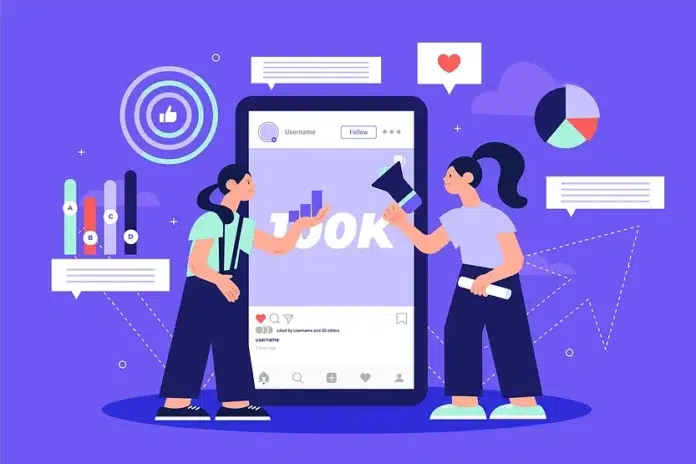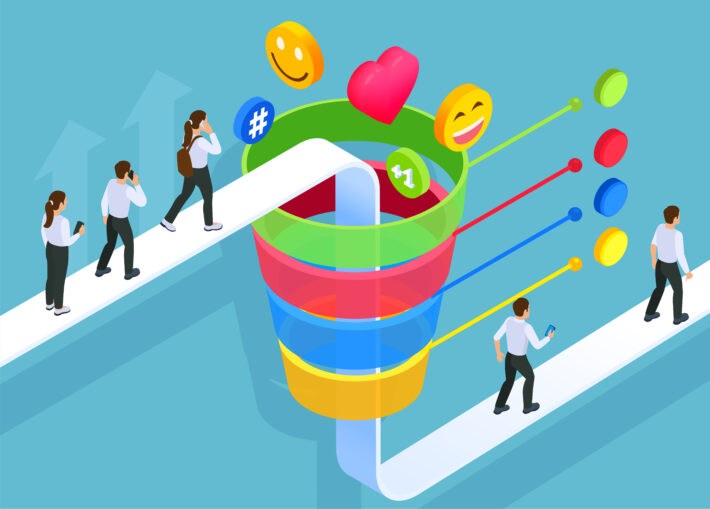Marketing Automation vs. Traditional Marketing: What’s the Difference?

The marketing landscape is evolving at a breakneck pace, forcing businesses to adapt or risk falling behind. At the heart of this transformation is the need to either embrace the power of marketing automation or stick with traditional marketing methods. This decision is not just about following the latest trend; it is a strategic move that can either propel your company to unprecedented growth or leave you trailing behind your competitors.
Choosing the right approach can mean the difference between maximising efficiency, increasing ROI, and staying ahead of the curve versus becoming obsolete.
What is Marketing Automation?
Marketing automation is a technology-based solution that automates marketing processes and campaigns across multiple channels, such as email, SMS, social media, and the Internet. It is designed to streamline and simplify time-consuming marketing tasks, like
- Email marketing
- Social media posting
- Launching ad campaigns
- Lead nurturing
- Campaign tracking
- Website visitor tracking
- Analytics and reporting
Marketing automation tools enable business owners, marketers, and entrepreneurs to generate and qualify more leads while also delivering more timely, personalised messages to prospects, freeing up time to focus on other high-impact tasks. When properly implemented, it allows you to market more effectively while driving efficiency across your sales and marketing operations.
How is Marketing Automation Different from Traditional Marketing?
While both aim to reach your target audience, marketing automation and traditional marketing take very different approaches. Here’s a breakdown:
- Traditional Marketing: Broadcasts messages (think TV ads, billboards) to a large audience, making it difficult to target specific customers. Measuring results is imprecise, and it’s a one-way street with limited interaction.
- Marketing Automation: Uses software to deliver targeted messages (think personalized emails, social media posts) based on customer data. It allows for real-time measurement and two-way communication, fostering engagement.
Limitations of Traditional Marketing:
While traditional marketing methods have a rich history and can be effective, they come with limitations that can hinder businesses in today’s digital age. Here’s a breakdown of some key drawbacks:
- Limited Reach: Traditional marketing often targets a broad audience, making it difficult to reach specific ideal customers efficiently.
- High Cost: Production and placement of traditional media can be expensive, particularly for small businesses.
- Difficult to Measure: Measuring the effectiveness of traditional campaigns can be imprecise, leading to uncertainty about audience engagement and conversion rates.
- Limited Engagement: Traditional marketing is mostly one-way communication, hindering real-time interaction and feedback.
- Lack of Personalization: Tailoring messages to specific customer segments is challenging with traditional methods.
- Slower Response Time: Adjusting traditional marketing campaigns is slow and costly compared to digital alternatives.
- Declining Audience: Traditional media channels are experiencing a decline in audience reach due to the rise of digital media consumption.
What are the Benefits of Marketing Automation Over Traditional Marketing?
Marketing automation goes beyond just saving time. Here’s how it can supercharge your marketing efforts:
- Personalized Marketing Messages:
- Segmentation: Group contacts based on interests, demographics, and behavior.
- Targeted Content: Deliver relevant emails, social media posts, and website content based on each segment.
- Dynamic Emails: Personalize email greetings, offers, and product recommendations for a more engaging experience.
- Improved Lead Conversion Rates:
- Automated Lead Nurturing: Engage website visitors and leads with automated email sequences based on their actions.
- Trigger-Based Campaigns: Automatically send targeted messages based on specific actions, like abandoning a cart or downloading a white paper.
- Lead Scoring: Assign points to leads based on their behavior to identify the most sales-ready ones.
- Measuring Campaign Effectiveness:
- Detailed Tracking: Track opens, clicks, conversions, and other key metrics across different channels.
- A/B Testing: Test different versions of emails, landing pages, and calls to action to see what resonates best with your audience.
- ROI Reporting: Get clear insights into the return on investment (ROI) for your marketing campaigns.
With this data at your fingertips, you can constantly optimize your campaigns for better results.
The best approach? A strategic mix! While marketing automation refines brand awareness with targeted digital campaigns, personalised messaging, and data-driven strategies, traditional tactics like print ads, TV commercials, and events generate broad visibility.
How can businesses effectively integrate Traditional Marketing with Marketing Automation?
Traditional marketing and marketing automation, while seemingly on opposite ends of the spectrum, can be a powerful duo when used strategically together. Here are some ways businesses can effectively integrate them:
- Leverage Traditional Marketing to Gather Data:
- Use print ads, billboards, or TV commercials to direct viewers to a landing page with a unique trackable URL. This allows you to collect data on potential customers who are interested in your product or service.
- Include QR codes in traditional marketing materials that link to specific promotions or lead capture forms.
- Nurture Leads with Automated Campaigns:
- Once you have captured leads through traditional marketing, set up automated email sequences to nurture them further down the sales funnel. These emails can provide valuable content, answer common questions, and promote special offers.
- Use marketing automation to personalize the customer journey based on the information collected through traditional channels.
- Track and Analyze Results:
- Use UTM parameters (unique tracking codes) in traditional marketing materials to track their effectiveness in driving traffic to your website or landing pages.
- Analyze the data from both traditional and marketing automation efforts to see which channels are generating the most qualified leads and the highest ROI (Return on Investment).
- Use Traditional Marketing to Promote Automation Efforts:
- Promote your social media channels or email list sign-ups through traditional advertising.
- Run contests or giveaways that require participants to follow you on social media or sign up for your email list.
- Create a Seamless Customer Experience:
- Ensure your branding and messaging are consistent across all marketing channels, both traditional and digital.
- Make it easy for customers to transition between channels. For example, include your website address and social media handles in all traditional marketing materials.
Marketing Automation vs. Customer Relationship Management
Customer Relationship Management (CRM) and Marketing Automation (MA) are two powerful tools for businesses, but they serve distinct purposes. Here’s a breakdown of the key differences:
Focus:
- CRM: Sales and customer service. CRMs are designed to manage all your interactions with customers, from initial lead generation to after-sales support. They help you track customer data, deals, and communication history, allowing your sales and support teams to provide personalized attention.
- Marketing Automation: Marketing efforts. MA platforms automate repetitive marketing tasks, such as email campaigns, social media scheduling, and lead nurturing. They help you attract new leads, convert them into paying customers, and ultimately grow your business.
Target Audience:
- CRM: Existing and potential customers throughout the sales funnel. CRMs help you manage relationships with both qualified leads and existing customers.
- Marketing Automation: Primarily leads in the early stages of the sales funnel. MA focuses on attracting new leads, nurturing their interest, and qualifying them for the sales team.
Key Features:
CRM:
- Contact management
- Sales pipeline management
- Deal tracking
- Customer service tools
- Reporting and analytics
Marketing Automation:
- Email marketing
- Landing page creation
- Lead scoring
- Marketing campaign management
- Social media marketing automation
Integration:
While separate, CRMs and MA platforms can be incredibly powerful when used together. They can share data seamlessly, providing a more complete picture of the customer journey. For instance, information captured through marketing automation (e.g., website visits, email opens) can be fed into the CRM to help sales reps personalize their outreach.

The Future of Marketing Automation: A Growing Industry!
The future of marketing automation in 2024 is expected to be characterized by several key trends, including an increased focus on hyper-personalization, AI-driven insights, and the integration of diverse marketing channels for seamless customer experiences. Here’s a breakdown of the key trends:
1. Hyper-Personalization Takes Center Stage:
Gone are the days of generic marketing messages. The future is about ultra-specific content tailored to individual preferences and behaviors. Marketing automation platforms will leverage data and AI to create laser-focused campaigns that resonate deeply with each customer. Imagine emails that feel like they were written just for you, or social media ads that perfectly match your interests.
2. AI Unveils Powerful Insights:
Marketing automation is becoming smarter with the help of artificial intelligence. AI can analyze vast amounts of customer data to identify patterns and predict future behavior. This allows marketers to create targeted campaigns and optimize them for maximum impact. Imagine AI automatically segmenting your audience or crafting personalized recommendations for each customer.
3. Seamless Omnichannel Experiences:
The future customer journey won’t be confined to a single channel. Marketing automation will seamlessly integrate email, social media, SMS, and other channels to deliver a cohesive brand experience. Customers might receive a targeted ad on social media, followed by a personalized email with a special offer, all while browsing your website for relevant products.
4. The Rise of Conversational Marketing:
Interactions with chatbots and virtual assistants are becoming increasingly common. Marketing automation will leverage this trend by creating more interactive experiences. Imagine chatbots that can answer customer questions in real-time, qualify leads, and even schedule appointments. This will allow for more personalized and convenient customer interactions.
5. Focus on Customer Lifetime Value (CLTV):
Marketing automation will go beyond just acquiring new customers. The future will see a focus on nurturing existing relationships and maximizing the value of each customer. This could involve automated loyalty programs, personalized recommendations for upsells and cross-sells, and targeted campaigns to win back lapsed customers. By focusing on CLTV, businesses can build stronger relationships and ensure long-term growth.
How to Choose the Right Marketing Automation Platform?
Selecting the right marketing automation platform requires understanding your business goals. Make a list of essential features like email marketing, social media integration, and analytics. Consider budget, ease of use, and how the platform integrates with your existing CRM or website. Research platforms that offer strong customer support and user training, and don’t forget to check out customer reviews and demos before making your final decision.
Since choosing the right marketing automation platform is crucial, consider exploring resources like StaQ.ai, a software marketplace that helps business leaders find the best software for their needs. This can streamline your research and ensure you select a platform that aligns perfectly with your marketing goals.



